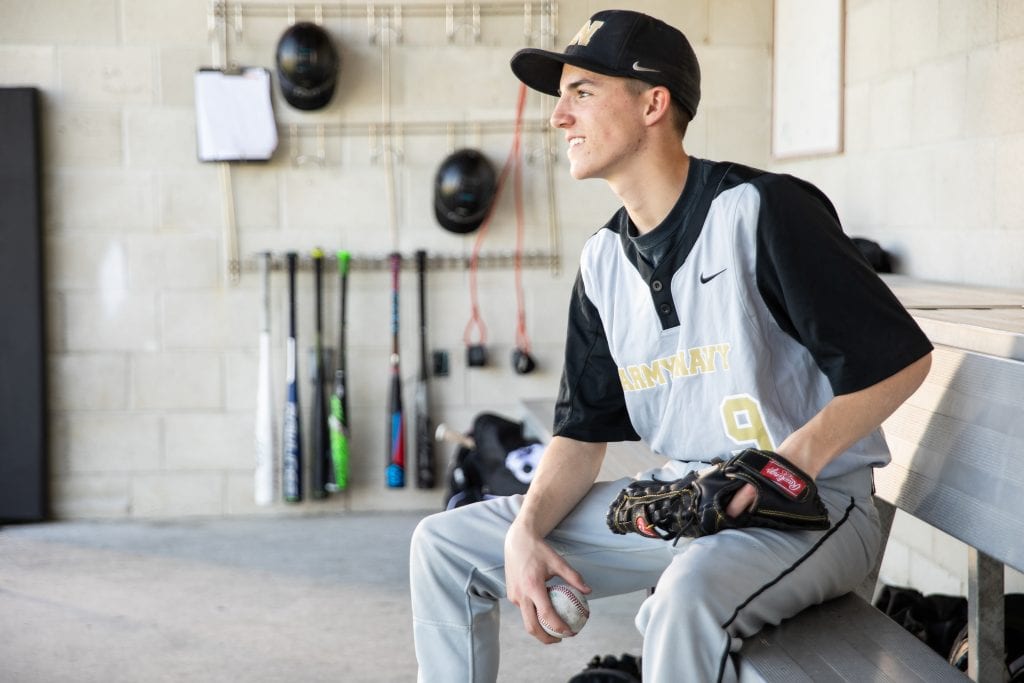 The benefits of playing sports in high school are fairly well-known, but some information provided here may inspire and motivate you. Let’s begin with some basics about high school athletics and then review the many benefits of sports participation in high school and beyond.
The benefits of playing sports in high school are fairly well-known, but some information provided here may inspire and motivate you. Let’s begin with some basics about high school athletics and then review the many benefits of sports participation in high school and beyond.
As you probably know, at both public and private schools, the most common high school sports include football, track and field, basketball, baseball, soccer, cross country, wrestling, tennis, golf, swimming, and diving. Some U.S. boarding high schools have also seen the growing popularity of lacrosse, martial arts and even surfing!
10 Benefits of Playing Sports: How Athletics Can Ramp Up Success in Teenagers
For the most part, when you think about playing sports, you tend to think about the need to develop self-discipline, stay physically fit, and learn teamwork skills. These are definitely benefits but by no means a complete list. Check out all of these great long-term benefits of playing sports.
1. Sports Impact Physical Health
A key benefit of sports is staying in shape and improving overall health. A major health network, Scripps Health, found that “adolescents who play sports are eight times more likely to be physically active at age 24 than those who do not play.” This, alone, is a great motivation to be physically active in high school sports but consider the following points as well:
- Playing high school sports improves your cardiovascular health
- Sports participation keeps weight in check by burning calories
- Athletics improves strength, flexibility, and mobility over time
- Sports play a role in curtailing major diseases like diabetes and obesity
2. Student-Athletes Also Show Academic Improvement
It’s probably not surprising that one of the key benefits of playing sports in high school is the link to higher academic achievement. In recent years, scientists who study the human brain have found that physical activity increases cognitive development which often leads to stronger academic performance. Other studies have reported that sports participation in high school results in higher aspirations for earning a college degree. Other findings include:
- Sports and physical activity increase creativity
- Fitness and sports are tied to critical thinking
- Athletics, similar to academics, demand memorization
- Sports, like all forms of learning, require practice and repetition
3. Playing Sports Helps Improve Mental Health
You are probably familiar with the science that indicates that sports reduce levels of cortisol, the hormone tied to stress as well as releases endorphins and increases serotonin which helps improve your overall sense of well-being.
One study published in the Journal of Adolescent Health found that students who play team sports in grades 8-12 have less stress, lower levels of anxiety, and better overall mental health as young adults. Additional research indicates:
- Playing sports helps teens get their minds off stressors
- Sports help kids learn how to manage and express their feelings
- Youth sports may help teens minimize depression and anxiety
- Playing sports helps teens build friendships and social connections
4. Sports Boost Long-Term Personal Development
Mastering a sport or fitness goal encourages you to set goals for personal growth and development. Here are some ways you can grow as a result of playing sports in high school:
- Sports help students set individual goals and common goals
- High school sports boost self-esteem and confidence
- Sports help boost motivation and a positive outlook on life
- Sports require inner work to grow on both personal and physical levels
5. Athletic Participation Promotes Social Connections
Youth sports help build social skills by connecting you to other teens with similar interests. Social interaction and creating a community of shared interests and goals is a great way to be part of something bigger than yourself. Consider the following:
- Sports help teens make new friends and seek out mentors
- Athletics help teens engage in healthy competition
- Sports create a sense of “brotherhood” and camaraderie
- Athletics teaches teens about teamwork and conflict resolution
6. Athletes Learn Leadership Skills
Working towards a common goal with a group of players teaches teenagers to work on effective communication and teamwork skills. The sports experience is helpful at school, but also when encountering problems at home. Important lessons can include:
- Athletes learn how and when to lead and follow
- High school athletes mentor and guide other players
- Athletes learn about the value of teamwork skills
- Playing sports requires effective communication
7. Playing Sports Builds Character
Athletes are well known for physical strength, but they also develop mental and internal strengths. Good character can make or break a team, and the cultivation of a value system is a key benefit of playing sports. Some players even consider sports to be an important part of their spirituality.
- Playing sports builds internal strength and character
- Good athletes adhere to values like honor and respect
- Successful sports teams require players to model integrity and honor
- Athletes practice compassion and gratitude
8. Sports Teach Teenagers Important Life Skills
The President’s Council on Sports Fitness and Nutrition found that “participation in sports increases empowerment, personal responsibility, and self-control. It also improves life skills like goal-setting, time management, and leadership. Plus, learning to bounce back from a loss or a poor performance teaches resilience and perseverance.” Here is a recap of some of the benefits cited:
- Sports encourage self-responsibility and self-discipline
- Youth sports build resilience, perseverance, and tenacity
- Playing sports teaches goal-setting and time-management skills
- Sports teach teenagers self-control and good manners
9. Sports Create a Foundation for a Positive Lifestyle
In studies by the National Federation of High School Associations, findings indicate that student-athletes are less likely to participate in unhealthy or risky behavior when they play sports in high school.
The same report cited a study by the Department of Education that found students who spent no time in extracurricular activities in high school were 49% more likely to use drugs. Just four hours in an extracurricular activity like sports each week dramatically improved those numbers.
- Athletes are less likely to use drugs as a form of escape
- Playing sports requires good life habits and personal hygiene
- Student-athletes are less likely to engage in risky behaviors
- Athletes know how to create a life balanced between mental, social, and physical pursuits
10. Sports Participation Impacts Career Success
In an article by Athletic Career Placement (ACP), the organization makes a compelling argument that sports have a direct impact on career success and asserts four character attributes as cornerstones of athletic participation with resulting outcomes:
- High school athletes learn to embrace teamwork
- School sports inspire a sense of humility
- Playing sports teaches adaptability
- Youth sports demand accountability
As you can see, playing sports in high school can positively impact your life. The many benefits will help you set goals, learn life skills, and create the daily structure to live a well-balanced and productive life.
Looking for the best boarding school for sports? Feel free to contact us to learn more.


